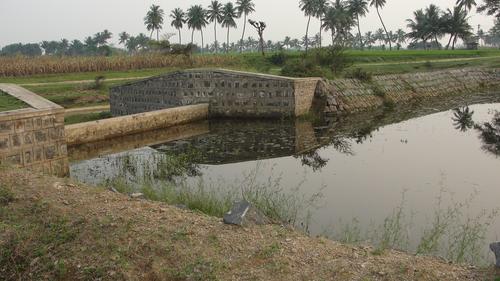Water spreading weirs span the entire width of a valley and are built of stone masonry or concrete up to 50 cm above the surface of the surrounding sand. They consist of a spillway in the actual riverbed and lateral abutments and wings. Floodwater is spread over the land area upstream of the structure, eventually overflows the lateral wings, and then slowly flows back towards the riverbed below the structure. Spreading weirs are effective when built in series of weirs, where each weir retains some of the water and alluvial deposits (fertile soils) and gradually raises the bed of the valley. Water spreading weirs slow the water flow and increase the regularly flooded area. They enable rainwater to be stored by seeping into the ground and raising the level of the groundwater table close to the surface. They are suited for the rehabilitation of wide and shallow dry valleys in which severe gully erosion prevents regular flooding. They are also suitable for improving agricultural productivity in more or less intact valley floors. Designing and constructing weirs requires significant technical knowledge and their implementation calls for well-organized communities. In Niger, Chad and Burkina Faso, more than 370 water spreading weirs have been implemented covering an improved cultivation area of more than 20,000 ha benefitting more than 40,000 households (GIZ, 2011). In West Africa they are well known as seuils d’épandage. (Mekdaschi & Liniger 2013)
